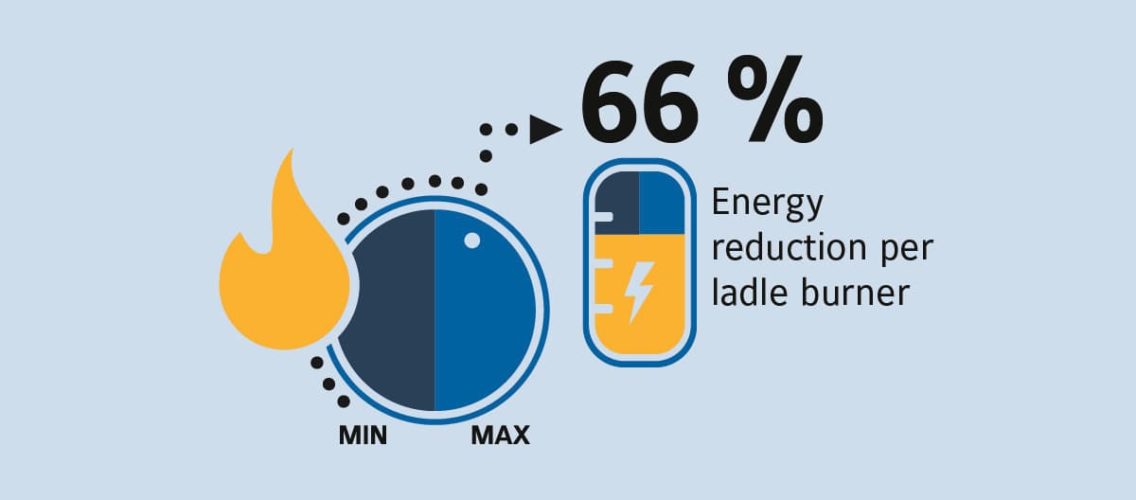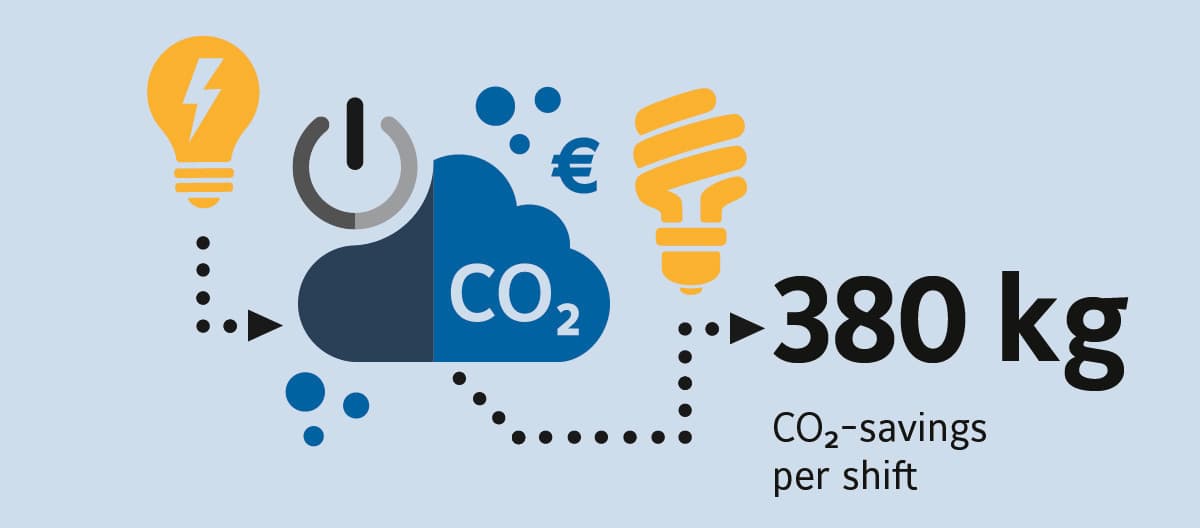Technology as an energy-saving factor
Part 2 of our series “Saving energy at Kuhn Special Steel”. Continue reading
Energy-saving helps the environment and reduces operating costs. Kuhn Special Steel has therefore put together an energy-management team to spot potential savings. The members of this team have identified two major areas: one involving people; the other has to do with technology.
We intend to use this three-part series on the subject of energy-saving to show how the team’s work has delivered savings in each category, and how we did it.
New systems deliver major savings
Energy-efficient items of equipment reduce energy consumption, and therefore electricity costs. This is common knowledge. Most people nowadays check the energy efficiency classification on the sticker when buying a new refrigerator or washing machine. And nearly all of us know that LED light bulbs consume less electricity than their incandescent predecessors. So our energy-management team posed this question: Where and how can energy-efficient items of equipment reduce consumption? “We started out by checking all the points of consumption in the company, from foundry furnaces to office coffee machines, and identified several thousand electrical items”, adds Dirk Breuer, a member of Kuhn Special Steel’s energy-management team. “The second step entailed evaluating the energy-saving potential of each device, and the cost of its replacement. After a cost-effectiveness analysis, we got down to work.” The following two examples show where and how.
“Smart” flame delivers savings
Large consumers of electricity offer the greatest potential for savings, and the company’s foundry ladle burners are some of its biggest energy guzzlers in this respect. These are used to heat up and maintain the temperature of the foundry ladles. The ladle burners used to date provided heat at the desired temperature on a continuous basis – not a sensible energy policy by today’s standards.
As part of the modernisation process, we have replaced three of these ladle burners with new, controllable units. These switch off automatically as soon as the desired temperature is reached, making them more efficient. This delivers enormous energy savings, with three of the new devices consuming the same amount of gas as just one of their old equivalents. We now intend to proceed to gradual replacement of the remaining burners.
Lights on – with LEDs
LEDs are the current stars of the artificial lighting world. They deliver both a long service life and outstanding energy efficiency. They also have practical advantages, including ease of replacement, standard lamp-holders, soft illumination and eventual disposal as ordinary waste. So it soon became clear that we were going to have to go over to LED lighting throughout the production area. This involved the replacement of 878 lamps, consisting mostly of fluorescent tubes. Their 740 LED replacements supply lighting of a much-better quality. The high investment soon paid for itself, as the costs were recovered after just 16 months.
Our annual electrical-energy cost savings have since then amounted to high five-figure sums, and we have also reduced CO2 consumption by 380 kg per eight-hour shift. This is about the same amount of CO2 that an average petrol-driven car emits over a distance of 1,250 miles/2,000 km.
Energy-saving as a fun activity
“Energy-saving is a process, a path that we are destined to follow”, says Dirk Breuer. “I look upon it as a sport, with points awarded on the basis of percentages. It really is fun to discover new potential, as we rotate this or that adjustment screw. And the best thing is that this new ‘sport’ helps us to produce more cheaply, while also benefiting our environment and climate.”
Illustrations: lessingtiede



